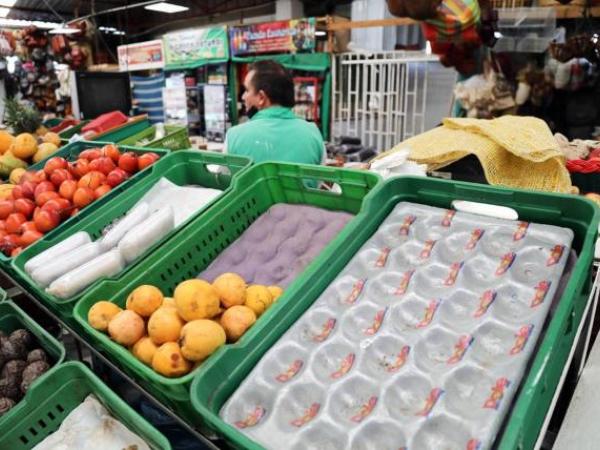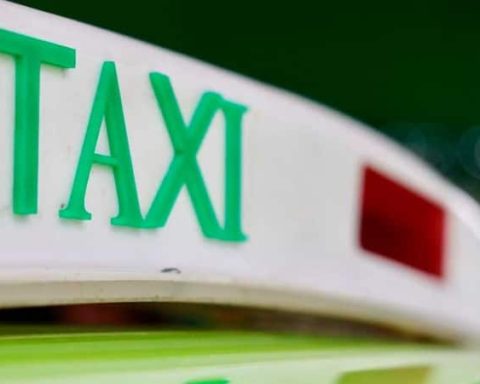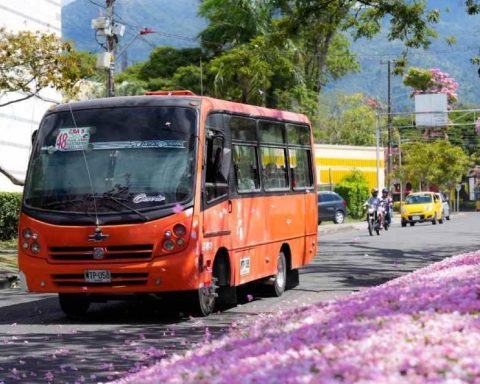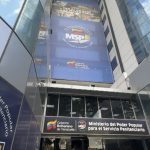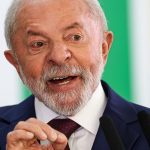Food has been highly affected by inflation, but behind these prices, agricultural producers also face significant cost increases. The president of the Colombian Farmers Society (SAC), Jorge Bedoyaexplained to Portfolio how the sector is facing the situation.
(Read: Consumption in Colombia would begin to decrease: Fedesarrollo).
The rise in food affects the pocket of Colombians, how do you see that inflation?
There are several things, you have to look at each group of products separately to understand the inflationary phenomenon and what can happen in the future. In short-cycle crops, such as potatoes, we must first think about what happened in 2020.
The pandemic and mandatory isolation was the worst scenario for the agricultural sector, because we were left without consumers and we were prepared with a food supply for a normal country. Between May and November 2020 the food inflation was negative, so much so that we saw growers literally giving away potatoes on highways.
2021 begins with government aid, recovery prospects and vaccination, but in May the strike occurs, and in that month alone food inflation was 5%. And not only was there an inflationary impact due to a lower supply that did not arrive in its natural supply, there was an additional collateral effect: many producers who had been going bankrupt in 2020. This was reflected in the second semester, and to this is added the disruption in supply chains that affected the cost of sourcing raw materials.
Now, in 2022, the chain crisis was beginning to ease, but some sectors no longer had the same capacity to reinvest to produce. And to top it off, the Russian invasion of Ukraine also arrives and that will be felt later,r prices in raw materials and fertilizers.
How are, on the other hand, the costs of the producers?
What is happening in 2022 is serious, and it will surely deepen in the coming months, as the vast majority of products are imported. Looking at the behavior of inputs such as urea, potassium chloride and fertilizers in general, it was seen that they were falling at the end of 2021, but once Russia invaded Ukraine they shot up and those prices have not returned to the levels we had before the container crisis. Corn and soybeans have behaved upwards, since Ukraine is a producer of 14% of the world’s corn and, in addition, there are expectations of lower harvests in Brazil and Argentina due to the La Niña phenomenon.
(Besides: Reasons why Colombia’s GDP will be one of the strongest in 2022).
Jorge Enrique Bedoya, president of the SAC.
Juan Manuel Vargas – Weather
How effective has the lowering of tariffs been for inputs?
Those measures are well-intentioned, but they are not effective. The 6 or 7 million tons of imported yellow corn and soybeans, raw materials for the production of concentrated food for pigs and poultry and other species, did not have tariffs before these decrees, so there is no real impact. The same with the more than 2 million tons of fertilizers that the country imports per year, more 86% had no tariffs.
The bulk of these imports do not benefit from the reduction in tariffs, which has very small private benefitss in the agricultural case, as with some seeds or for the beer production industry, is where perhaps the greatest benefit lies. And even if there is an impact, it will depend on the flow of imports and when that becomes a final product and reaches supermarkets or wholesale markets. False expectations about reducing inflation through tariffs could not be generated because the majority of inputs did not have tariffs.
What can you do then?
We suggest the Minister of Agriculture and the Minister of Finance, in a communication that we sent, strengthen the monetary transfers of Colombians in a more vulnerable condition, who are the ones who suffer the most because a greater percentage of their income goes on food. That is perhaps the most effective measure.
As this is an issue of growing demand and a resentful supply, beyond the role of the Banco de la República in trying to curb consumption through interest rates, on the supply side, which is what is up to us, what What is needed is to recover the production capacity of the crops in which a reduction has been seen.
It is necessary to look at what direct support can be given to certain products, to cushion the cost of fertilizers, and that allows the producer to replant or plant more and thus impact prices. We have also suggested the creation of a special line of credit with fairly long grace periods, and a rate close to 0%, which will allow oxygenate the productsparticularly in short cycles.
Agro “put out” its face for GDP in the pandemic, how do you see the sector now?
More than dynamics, the important thing is profitability and economic viability. The greatest concern at this time is to guarantee the food security of the country and that the inflationary phenomenon stops. That is why it is so important for the Government to have a shock plan with sufficient resources to deal with the situation. In a transition from one government to another, this situation will also have to be dealt with by the President who arrives.
(Read: The war between Russia and Ukraine slows the world economy).
How do you see the candidates’ proposals for the sector?
The purpose of campaigns is for someone to win, but the materialization of promises is different. The message that we send from the SAC is that a real commitment is required, the field has been forgotten for decades, and it requires solid budgets. In this sense, one of the things that we do miss in all the candidates in general is the inflationary shock plan and what is the long-term policy in the sector, because unfortunately many governments are changing the emphasis on rural areas and consistency over time is needed. Much remains to be done on how and to point out clear strategies for the future, since whoever arrives at the Casa de Nariño will find himself on August 7 with an inflationary problem.
LAURA LUCIA BECERRA ELEJALDE
